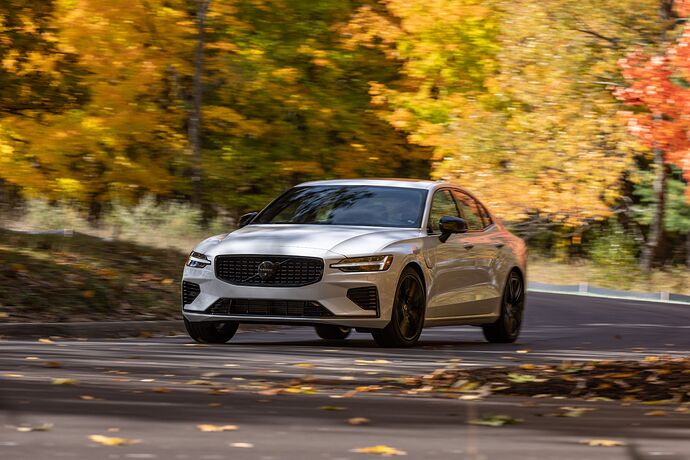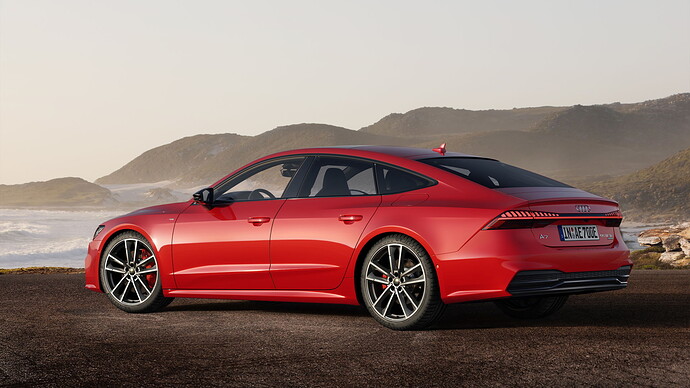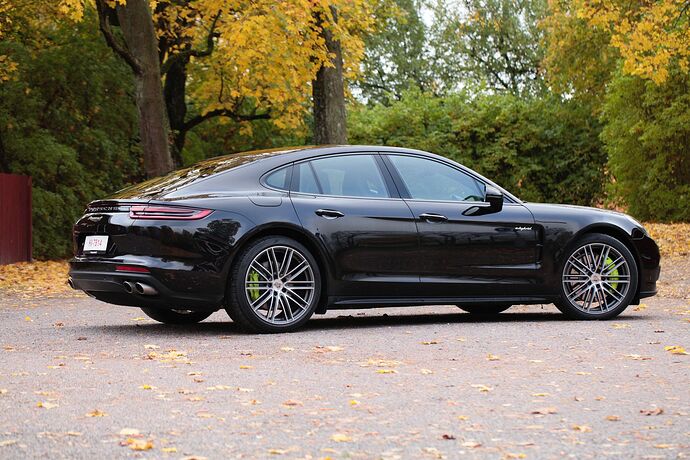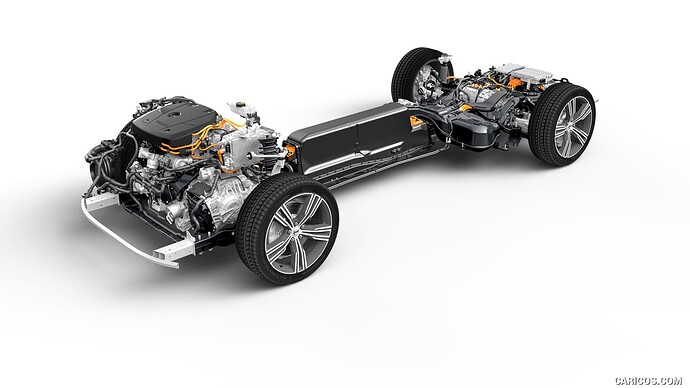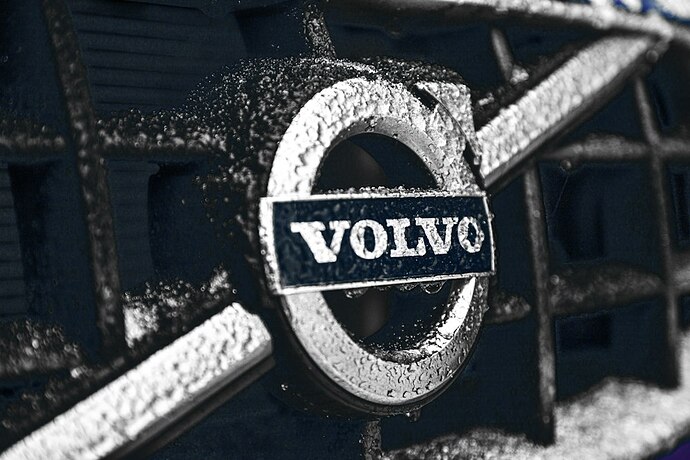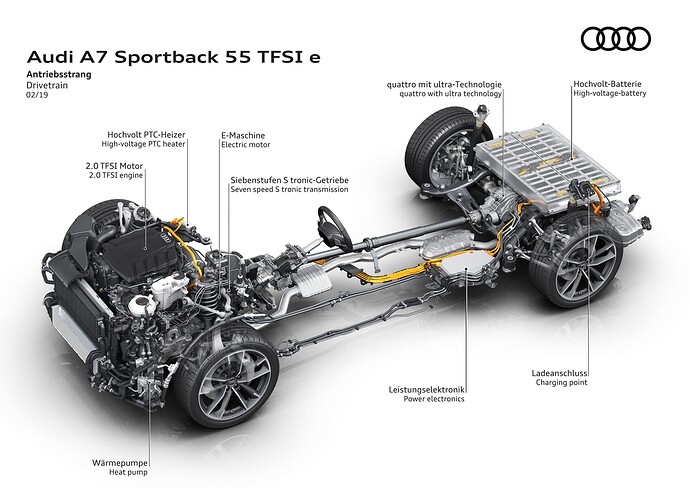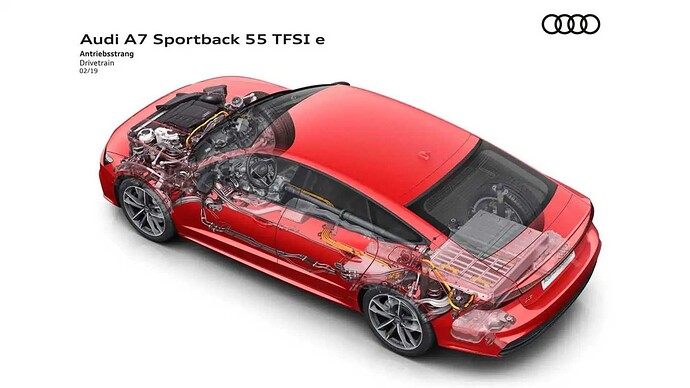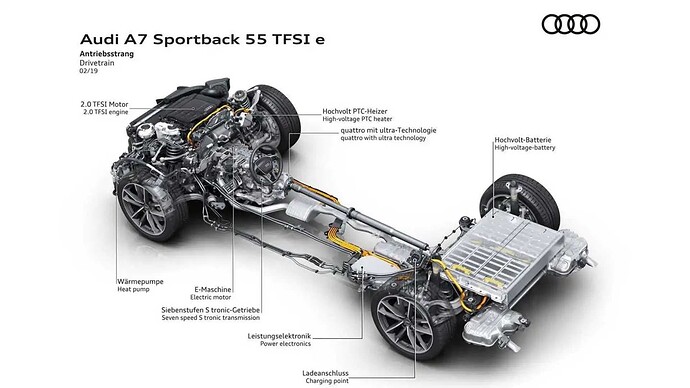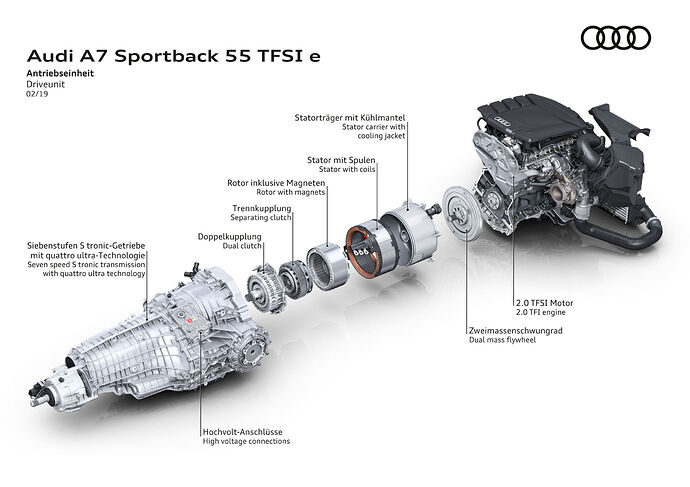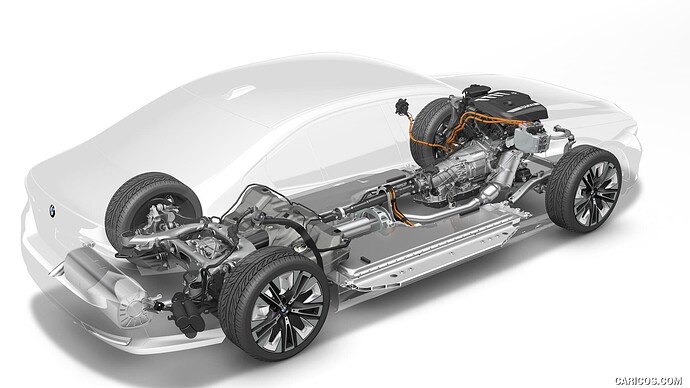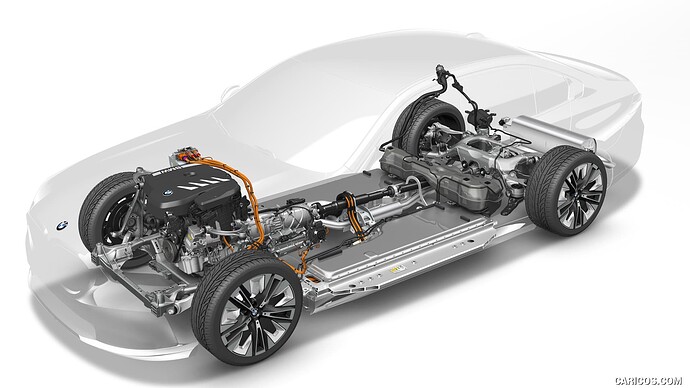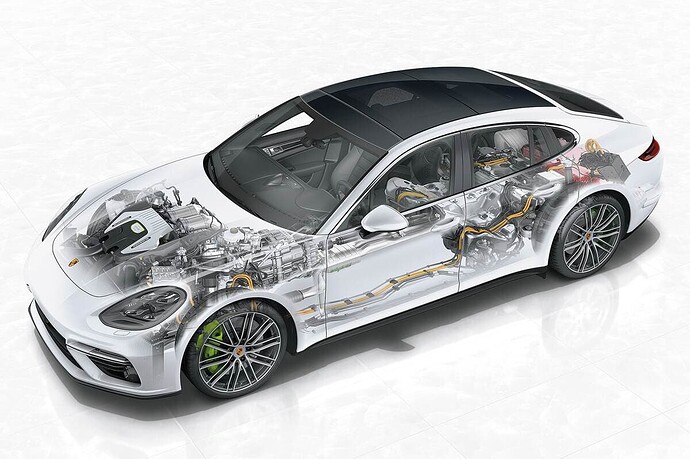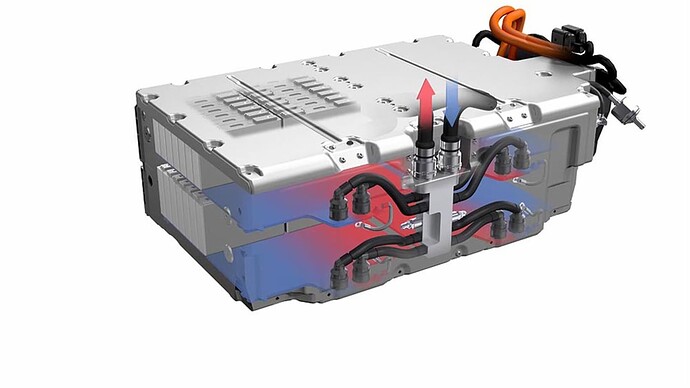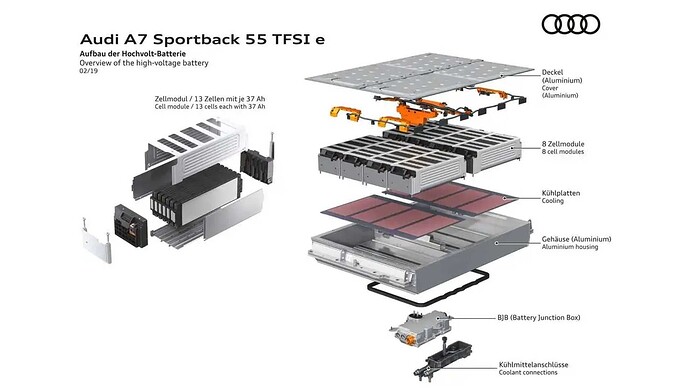finally the Porsche
the system is similar to Audi’s ( as both Audi and Porsche are under VW ( VolksWagen ) umbrella ) but there are key differences …
-
instead of an old 7 speed double clutch the Porsche uses a new 8 speed design, but more importantly the Porsche transmission isn’t a transaxle like Audi which allows it and the engine to mount deeper into the chassis for better weight balance … essentially Audi engines are always in front of the axle because to save money they eliminated the front propeller shaft and the axles go straight into the transmission, which allows them to offer bargain priced AWD but at a cost of poor weight distribution …
-
instead of cast iron ( cheap but heavy ) 4 cylinder that Audi uses the Porsche has an Aluminum V6 as the base engine ( V8 is available )
-
instead of battery being on top of the trunk like in Audi the battery is IN the trunk ( all the way down ) in the Porsche
i never looked at the Porsche until last week because knowing the prices in my mind it would be a waste of time to even consider as i have assumed that being under same umbrella as Audi the system would be basically the same just at a higher price …
what i haven’t realized is that the Porsche solved all of the problems that Audi has … even though it actually came out YEARS BEFORE the Audi …
and that’s when i realized that MARKET SEGMENTATION was at work …
market segmentation is when some products are DESIGNED TO SUCK in order to protect the value proposition of more expensive products …
i was SEETHING when i saw the stupidity of Audi’s design and couldn’t understand how German engineers could be so stupid … well they weren’t. they were ORDERED to ruin that car.
everything in the Audi is wrong - the Engine is wrong size ( 4 cyl instead of 6 ), wrong material ( iron instead of aluminum ), wrong position ( too far forward ), the battery is wrong shape and in wrong place. there was so much stupidity in that beautiful car i wanted to choke myself.
but as usual when smart people make such dumb “mistakes” there is a reason … and the reason was that Audi A7 was designated to be inferior to the Porsche Panamera and inferior it is … IN EVERY WAY
engine is smaller ( by a third ), battery is smaller, trunk is smaller, fuel tank is smaller ( by a third ), interior is smaller, wheels are smaller and the transmission has 1 less gears … this is despite both cars being roughly the same size
the reason fuel tank is smaller in Audi is because when the Audi put the battery in the wrong place they didn’t just waste all of the space underneath it they also cut into the area where half of the fuel tank in the Porsche was. mind you they did this AFTER they already knew the right way to do it because Porsche came first … they DELIBERATELY moved the battery from the right location to the wrong one to make everything worse. now THAT is what i call German engineering !
in Audi’s defense the Prius Prime at the time had the battery in the same location as Audi but that’s because the Japs are fucktarded. the Germans KNEW where the battery SHOULD be but PRETENDED that they didn’t know and put it in the same location where it is in the Prius to make the car worse so it doesn’t step on Porsche’s toes.
well to play the devil’s advocate the Audi’s battery has single level cooling design whereas Porsche’s is two-level. it is basically Audi’s battery but folded in half for space saving. compare Porsche battery:
to Audi battery:
this folding does add additional cost / complexity and you could argue that in a cheap car like Prius the buyer might not want to shoulder this cost … but in an Audi A7 i expected better …
of course the Porsche was about $30,000 more than Audi but like an idiot i assumed they would be close since they are made by the same company and they have such similar overall dimensions …
but kudos to VolksWagen group they went out of their way to protect the Panamera by royally fucking up the Audi on purpose …
OK maybe i’m too harsh on Audi - there are actually some cost saving benefits to their solutions over what the Porsche is using - i guess i just never realized how much cost cutting is actually happening in a car like A7 … it’s almost as outrageous as when Tesla removed the entire Dash from Model 3 to make it cheaper than Model S …
now the Panamera Hybrid is $120,000 but a certified pre owned is $70,000 which puts it on a more level playing field with the other 3 options in this list.
i haven’t driven the Panamera yet but i drove an Audi PHEV that has same electric motor and similar double clutch transmission and i drove E-Tron GT that is built on Panamera’s platform as well as has similar body style and based on those experiences my expectations for Panamera Plug-in Hybrid are pretty high …
but then so is the price … is it worth it ? only a test drive can tell.
